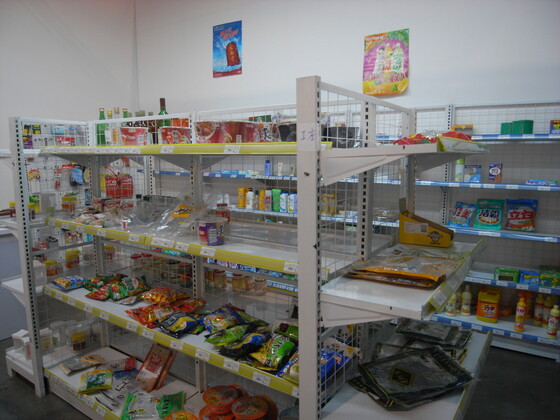In the midst of holiday-hectic mania-mall gifts-galore frenzy, I find myself feeling uncharacteristically emptied and frazzled. Commercial mayhem seems at its apex.
Shanghai-based artist Xu Zhen’s ShangART Supermarket–an installation at the recent international art fair Art:Basel | Miami Beach–resonates completely with my mood.
In the middle of a hustling-bustling art fair at which artworks were selling for billions of dollars, Zhen created a full-scale replica of a typical Chinese convenience store, fully stocked with American corporate-logo-covered goods as well as more traditional or “local” Chinese fare–with prices attached and a fully-functioning cash registrar in motion.
So what?–you say.
Here’s the catch: all the packages were empty. Entirely full of air. Puffed up bags of invisible potato chips–hermetically sealed nothingness.
Yet people were purchasing all this…standing in line for a hollow candy bar…and eating it up!
What does it mean when we are willing to purchase a package without its contents? When do the contents, then, no longer hold the substance?
Or, alternatively–how integral is the package to the power of the meaning? Is that foil bag more than just a shell?
On a political level, Zhen manipulated multiple layers of exchange value, critiquing the love/hate, contentious economic relationship between China and America. But in a broader sense, his installation speaks to me of the often-destructive nature of consumption…the “shop ’til you drop” mentality that begins to lose sight of the original, heartwarming purpose of gift-giving.
But if “it’s the thought that counts,” is a beautifully wrapped cardboard box with nothing in it enough for me to get my grandma?
—


